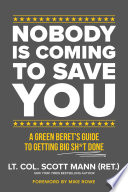

The core premise of the book revolves around the idea that individuals must take full responsibility for their lives and circumstances. In a world where external help is often unpredictable or nonexistent, it is crucial for individuals to recognize that they are the architects of their own destiny. This idea challenges the prevalent mindset that relies on external validation or assistance. By emphasizing personal responsibility, the author encourages readers to adopt a proactive approach towards their goals, whether they are personal, professional, or financial. The message is clear: waiting for someone else to solve your problems is futile; instead, one must take initiative and action to create change. This concept resonates deeply with self-empowerment and motivates individuals to harness their potential to overcome obstacles and achieve their aspirations.
Continue readingAnother significant theme in the book is the importance of self-motivation and discipline. The author posits that motivation is often fleeting and unreliable, which necessitates the cultivation of discipline as a more sustainable approach to achieving goals. The book provides insights into developing habits that foster self-discipline, such as setting clear objectives, creating structured routines, and maintaining consistency in efforts. By focusing on discipline rather than relying solely on motivation, individuals can build resilience and ensure progress even in challenging circumstances. This idea serves as a powerful reminder that success is often the result of persistent effort and dedication rather than sporadic bursts of enthusiasm.
Continue readingThe book also delves into the illusion of safety nets that many individuals believe will catch them in times of crisis. The author argues that relying on societal structures, such as government programs or job security, can lead to complacency and a lack of preparedness for unexpected challenges. The narrative encourages readers to recognize that these safety nets may not always be reliable and that true security comes from self-sufficiency and adaptability. By dismantling the myth of safety nets, the book advocates for a mindset shift towards building personal resilience and resourcefulness. This perspective empowers individuals to take charge of their financial and emotional well-being, ultimately leading to greater autonomy and confidence in navigating life's uncertainties.
Continue readingA critical aspect of personal growth highlighted in the book is the necessity of embracing failure as a learning tool. The author emphasizes that failure is not the opposite of success but rather an integral part of the journey toward achieving it. By reframing failure as a valuable teacher, individuals can cultivate a growth mindset that encourages experimentation and innovation. This idea challenges the fear of failure that often paralyzes individuals, urging them to view setbacks as opportunities for reflection and improvement. The narrative provides practical strategies for analyzing failures, extracting lessons, and applying them to future endeavors. This approach fosters resilience, igniting a willingness to take risks and pursue ambitious goals.
Continue readingWhile the book emphasizes personal responsibility, it also acknowledges the significance of community and networking in achieving success. The author discusses how building meaningful relationships and connections can provide support, resources, and opportunities that enhance individual efforts. The narrative encourages readers to actively seek out like-minded individuals and cultivate networks that align with their goals. By leveraging the power of community, individuals can create a sense of belonging and collaboration that amplifies their impact. This idea underscores the importance of surrounding oneself with positive influences and engaging in mutual support, ultimately fostering a collaborative environment that drives collective success.
Continue readingThe book emphasizes the necessity for continuous learning and adaptability in an ever-changing world. The author argues that stagnation is detrimental to personal and professional growth, and individuals must commit to lifelong learning to remain relevant and competitive. This idea encompasses not only formal education but also self-directed learning through reading, online courses, and experiential learning. The narrative highlights the importance of staying curious and open to new ideas, encouraging readers to embrace change and adapt to evolving circumstances. By fostering a culture of continuous learning, individuals can enhance their skill sets and remain agile in responding to challenges and opportunities.
Continue readingFinally, the book underscores the importance of having a clear vision and setting actionable goals. The author advocates for the practice of defining one's aspirations and breaking them down into manageable steps. This structured approach to goal setting not only provides direction but also fosters accountability and motivation. The narrative encourages readers to visualize their desired outcomes and create a roadmap for achieving them. By aligning daily actions with long-term objectives, individuals can maintain focus and make meaningful progress towards their aspirations. This idea reinforces the power of intention and planning in transforming dreams into reality.
Continue reading